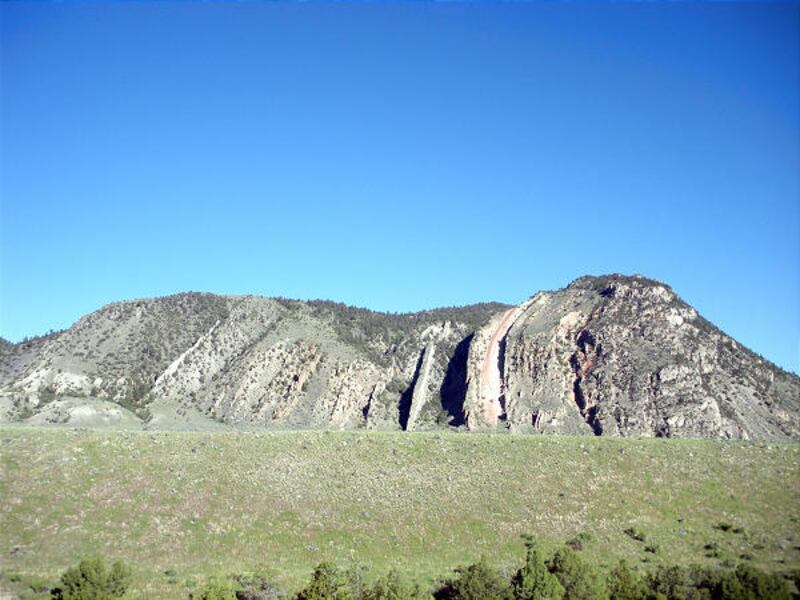WEBER CANYON — The one and only?
Unique can be a pretty precarious and even arrogant term to bound around, at least in geological terms.
For example, Devil's Slide, off I-84 in Weber Canyon and about eight miles east of Morgan, is a huge, seemingly unique chute of rock.
Composed of two parallel slabs of limestone about 20 feet apart and 40 feet high and originally referred to as "Gutter Defile" by the first recorded pioneer traveler in the area, this rock formation may be commonly believed by many Utahns to be one of a kind.
However, about five miles north of Gardiner, Mont., is an identically named feature — another Devil's Slide — and there are at least four other features in the world named "Devil's Slide," too.
Just north of Yellowstone National Park, off U.S. 89, this Devil's Slide also has a twist — a big curve in its slabs of rock. Otherwise, it does seem very similar to Utah's slide.
There are marked signs and vehicle pullouts by both of these Devil's Slides, too.
"Looking like a large playground slide fit only for the Devil, this site is a tilted remnant of sediments deposited in a sea that occupied Utah's distant geologic past," Carl Ege of the Utah Geological Survey states on geology.utah.gov. "Approximately 170 (million) to 180 million years ago, a shallow sea originating from the north spread south and east over areas of what are now Montana, Wyoming and Utah."
Ege refers to Devil's Slide as an unusual geological formation. Its sides, he notes, are composed of weather-resistant limestone.
"In between these two hard layers is a shaly limestone that is slightly different in composition from the outer limestone layers. This middle layer is softer, which makes it more susceptible to weathering and erosion, thus forming the chute of the slide," Ege explains.
The Montana Devil's Slide is described in Wikipedia as an unusual cliff rock formation, located on the side of Cinnabar Mountain in Gallatin National Forest. It is also composed of similar limestone.
It was first mentioned in the diaries of pioneer travelers in the area in 1870.
In August 1871, the Washburn–Langford–Doane Expedition noticed the formation and called it The Devil's Slide.
Nathaniel P. Langford expounded on the formation in his 1871 book, "Wonders of the Yellowstone."
"Their smooth sides, uniform width and height, and great length, considered in connection with the causes which had wrought their insulation, excited our wonder and admiration," Langford wrote.
"They were all the more curious because of their dissimilarity to any other striking objects in natural scenery that we had ever seen or heard of. In future years, when the wonders of the Yellowstone are incorporated into the family of fashionable resorts, there will be few of its attractions surpassing in interest this marvelous freak of the elements," he wrote.
"For some reason, best understood by himself, one of our companions gave to these rocks the name of the 'Devil's Slide.' The suggestion was unfortunate, as with more reason perhaps, but with no better taste, we frequently had occasion to appropriate other portions of the person of his Satanic majesty or of his dominion in signification of the varied marvels we met with," Langford wrote.
Besides these two Devil's Slides, there's a Devil's Slide in the San Francisco Bay area; another along a portion of the Old Santa Susana Stage Road in Southern California; still another identically named rock formation on the tiny Hawaiian island of Nihoa; and lastly there's "Die Teufelsrutsch," a rock formation in Germany that carries the same moniker.
However, none of these four appear similar to the Utah or Montana Devil's Slides.
e-mail: lynn@desnews.com

